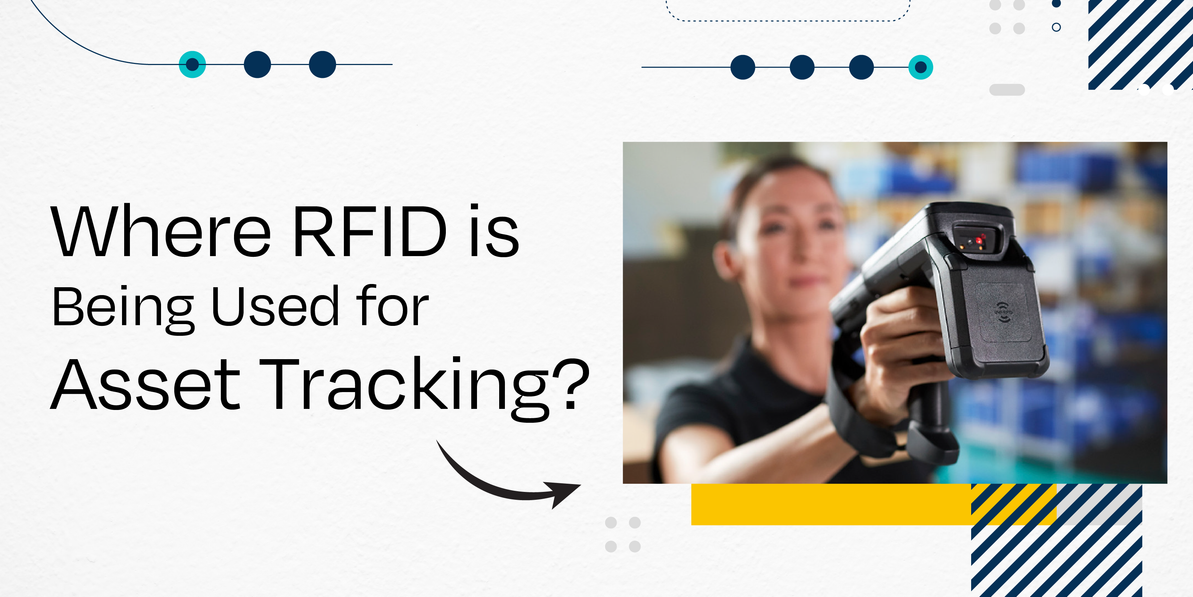Where RFID is Being Used for Asset Tracking
There are several different approaches to asset tracking using RFID. When first getting into an RFID project to improve your asset management system, you may be wondering where to start. With so many RFID hardware and software options for asset tracking available in today’s market, it can be hard to find the tools that meet your unique business use case.
Examples of business use cases where RFID asset tracking is used:
- Returnable shipping containers
- Healthcare
- Manufacturing
- IT assets
Since every use case is different, the RFID asset management system that your good friend’s company is using may not be the right fit for your company. For example, you would not be using heavy-duty RFID hardware for a retail inventory management system, and you would not be using simple CSV file software to keep track of military-grade weapons inventory.
With this in mind, we can examine a few examples of areas where RFID is being successfully used in asset tracking systems.
Returnable Shipping Containers
![]()
Returnable Shipping Containers are high-value assets.
Returnable shipping containers can be high-value assets. The mismanagement of these assets can result in severe inventory loss, costs associated with labor in retrieving shipping containers back from customers, and loss of time. This can be very harmful to a business workflow. Having a sufficient amount of well-managed returnable containers is important in knowing that shipments go out on a timely schedule. RFID can be used to streamline the shipping and returning of containers, ensuring that these assets do not get left behind in a customer’s warehouse.
By tagging returnable shipping containers with RFID tags and setting up an RFID reader in your warehouse or facility, you can give yourself visibility over exactly which containers are available, which containers have been shipped out, and which containers are in the customers’ possession and need to be returned. Having a good RFID software can also enable you with features such as notification reports, which can let you know if a customer has one of your assets in their possession which needs to be returned.
Healthcare
![]()
Surgical sets in hospitals are typically tracked using RFID
RFID is widely used in the healthcare industry to account for high-value assets. When it comes to hospital equipment, inventory loss can be detrimental. A doctor or nurse needs to know where his or her equipment is at all times. This is highly imperative to ensuring that the healthcare professional is able to perform their job duties to their fullest capacity. Many doctors and nurses are spending entirely too much time running from one end of a hospital to another searching for pieces of equipment that they need to fulfill their tasks. A hospital is one of the places where wasted time is absolutely not acceptable.
RFID technology can solve this problem. By tagging hospital equipment, healthcare professionals can have higher visibility over their items, making it simple to search for an item in a database and pinpoint its physical location within the hospital. Additionally, information can be associated to hospital equipment that allows workers to know when the item will expire, when it needs to be replaced, etc.
Manufacturing
![]()
Manufacturing involves keeping track of several small pieces of equipment
Inventory management is typically very difficult in manufacturing. There are often a wide number of parts in various sizes, shapes, materials, and categories. It may be a challenge to track the movement of these items throughout the manufacturing process.
By having the capability to track an item’s movement in manufacturing, data can be collected that is highly useful for analytics such as how long the manufacturing process is taking, how many of a certain item is required, and even when the manufacturing machine itself needs maintenance. All of this visibility is possible with a good RFID asset management system. A user can assign RFID tags to each of their pieces of equipment or even ask that the items be tagged prior to being shipped to their facility. These RFID tags can then be associated with various pieces of information regarding the item, such as serial number, lot number, expiration date, and even pictures of the specific item. This can be highly convenient when a worker is trying to gather many various pieces to be sent through the manufacturing line.
IT Assets
![]()
If you work in an office, you are likely surrounded by some very high-value assets. IT assets are defined as any items owned by the company that are used in the course of business activities. This can include a wide variety of items ranging from laptops to printers to office furniture. All of these items have a cost associated with them, so damage or loss to them can cause substantial harm to a business’s revenue.
With a good RFID asset management system in place, these problems can be avoided. IT asset management typically entails gathering data about various assets that can be used to analyze business decisions in purchasing, distributing, and handling of the assets.
These are just a few examples of areas where RFID is used for asset tracking applications. For assistance in selecting a great asset management system for your use case, please contact us!
Recent Posts
-
RFID Gate Portals in Retail and Warehouses
The landscape of retail and warehouse operations is undergoing a profound transformation, moving awa …Dec 18th 2025 -
Why Add RFID to Your Labeling Strategy in 2026
In 2026, the global supply chain is undergoing a seismic transformation. From omnichannel retail to …Dec 11th 2025 -
Zebra Handheld RFID Readers for Retail Efficiency
In the dynamic world of retail, where inventory accuracy, customer experience, and operational effic …Nov 28th 2025




